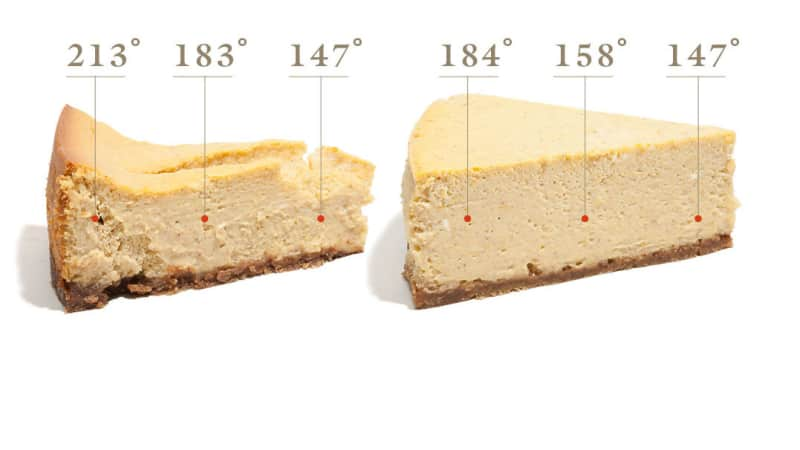When it comes to baked desserts, eggs are key. They add richness to baked custards (like crème brûlée), custard pies (including pumpkin), and cheesecakes, as well as help them all to thicken and set. Heat helps eggs bake into these desserts, but too much heat can scramble things up.
Why Gentle Heat Guarantees Smooth Custards
Published Apr. 4, 2019.

How the Science Works
As with scrambled eggs and omelets, we use whole eggs when baking custardy desserts. As the temperature in eggs rises, the proteins in both the white and the yolk become active. They begin to move about, running into each other, breaking the delicate bonds that hold them as coiled-up balls. Once unfurled, they are able to bond with the other proteins likewise whirling around them, creating a weblike structure that becomes increasingly opaque and solid with time.
The temperatures at which the egg white and the yolk coagulate are different—whites begin to thicken at 140 to 150 degrees and yolks at 150 to 160 degrees. This difference makes egg cookery a two-tiered task and is why when we cook an egg “over easy,” the white is solid while the yolk is still a gooey orange liquid. When baking custardy desserts, we use whole eggs mixed with many other ingredients (which often affect how rapidly the egg proteins uncoil and bond together) but that doesn't make the technique any less delicate.

Cooking egg custards requires very careful control of temperatures. When exposed to too much heat, the egg proteins will coagulate too much. They will form stronger bonds with the surrounding proteins, making clumps and lumps and separating from the liquid surrounding them. This is called curdling. Curdling is the enemy of egg-based desserts that are supposed to entice us with their smooth and creamy texture.

To combat this risk, we cook custardlike desserts low and slow. In a hot oven, pumpkin pie will leap from not yet set to overcooked in a heartbeat. And, because of the principles of conduction, the edges will cook much faster than the center. We generally bake custards in a low oven in order to mitigate the heat differential between the exterior of a pie or cheesecake and the interior. A low oven temperature also slows down the rate of cooking, thereby increasing the window of time when a dessert is perfectly cooked.
In addition to a low-temperature oven, we sometimes bake delicate egg-based desserts in a water bath, also known as a bain-marie. The ramekin or springform pan is placed in a roasting pan filled with water. Because the water never reaches a temperature higher than that of boiling water, or 212 degrees, the water further slows down cooking in these desserts.
Finally, for custards that are prepared on the stovetop, we temper eggs, or heat them very gently by mixing them with a small amount of hot liquid, in order to slow the rate of cooking.
The Effects of Heat on Eggs

Gentle Heat
Careful cooking keeps the network of egg proteins loose and smooth.

High Heat
Fast cooking can cause egg proteins to clump together, pull apart, and separate from the liquid surrounding them.
